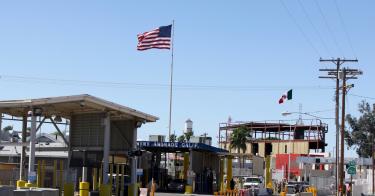If America’s competitors were intentionally trying to design a tax system to destroy the American economy, they probably couldn’t come up with a dumber tax system than the way the United States currently taxes our own businesses.
To fully appreciate the stupidity of the American corporate tax, consider this simple example:
If you are an American company making cars in Michigan, you have to pay a 35 percent profits tax on the car made here and then if the car is sold across the border to Mexico, the Mexicans slap a 16 percent value added tax on the car, so it is taxed on both sides of the border. Almost all countries tax goods produced in the United States this way.
Now let us say that the auto factory is moved from Michigan to Mexico City. Now the car produced in the factory in Mexico is not taxed by the Mexicans if the auto is sold in the United States.
Even more amazing: the U.S. imposes no tax on the imported car. To summarize, the car is taxed twice if it is built in America and then sold abroad and never taxed if it is built abroad and sold here in the U.S. And we wonder why companies are moving out in droves for China, India, Ireland, Mexico and the like.
Donald Trump is right. What we have in America is not free trade. It is stupid trade with the deck stacked against American producers and workers. Our federal tax is effectively a 35 percent tariff imposed on our own goods and services.
It doesn’t help matters that our 35 percent rate is the highest in the industrial world. Yet the corporate tax — despite being onerous, complex, and despite depressing employment, investment and wages here are at home — raises very little revenue for the government. In 2016 the U.S. corporate tax raised just over $300 billion or about 2 percent of GDP. This was one of the lowest percentages among almost all industrial nations.
What is the point of a tax that extracts high costs from the economy for very little revenue reward?
To create a level playing field, the U.S. has to reconstitute our tax system. This can be accomplished by lowering the tax rate and then turning the tax on its head so we are taxing our imports, but not our exports. In other words, we should tax activities based on where they are consumed, not where they are produced.
This is called a border adjustable tax system, and here are the reasons we need to do it:
1) A border adjustable tax will end all talk of tariffs and trade wars. At various times Donald Trump has suggested tariffs of anywhere between 5 and 35 percent on foreign goods imported into the United States. But tariffs violate our trade agreements and often lead to retaliatory measures by other countries. The free traders will rightly object loudly to these trade barriers.
A better solution is to impose the Trump 15 percent corporate income tax on goods when they are brought into the U.S. and exempt from tax goods produced in the U.S. but sold outside the U.S. In other words, our corporate tax would be based on where goods are consumed, not on where they are produced. This tax does not violate trade laws and only mirrors the valued added tax systems foreigners use to gain advantage.
2) A border adjustable tax has a broader tax base, and thus the rate can be lower.
The best tax system has a broad tax base and a low tax rate. To get the Trump tax rate down to 15 percent and still raise enough money to fund the government, we need the broadest tax base possible. Since America imports about $750 billion more per year than we export to other countries, the border adjustable tax collects about $100 billion more revenue every year. So the rate can be about 5 percentage points lower.
3) A border adjustable system taxes consumption not production.
Most economists agree that a good tax system taxes what people take out of the economy — their consumption, not what they put into the economy, their work, investment and risk taking. Many Keyensian economists have long argued that consumption is what drives the economy, but American consumers can’t consume if they aren’t producing something.
4) A border adjustable tax will help rejuvenate American manufacturing — especially in the Midwest. If Donald Trump wants to deliver on economic development in states like Michigan, Ohio, Pennsylvania and Wisconsin, the border adjustable tax will bring factories back to this region of the country. Overnight it will make American steel, cars, tractors, oil, and manufactured items 15 percent cheaper, while raising the cost of imported products by an equal amount. This means millions of jobs for the Midwest.
In exchange for a border adjustable tax, the U.S. should eliminate all existing tariffs and duties which can now range from 2 percent on shoes to 25 percent on toys. This eliminates all special interest favoritism, which is the worst feature of trade protectionism.
Retailers like Wal-Mart will complain that this tax will raise prices for imported products from China, Mexico and low-wage nations. This is shortsighted. People can’t buy products at Wal-Mart if they don’t have a job in the first place. And everyone in America can’t work at Wal-Mart. We have to make things in America to make America great again. Tax reform is the key to making that happen.
This piece originally appeared in The Washington Times


